2025-2026 Best Winter Festivals, Events and Activities in Tohoku, Japan
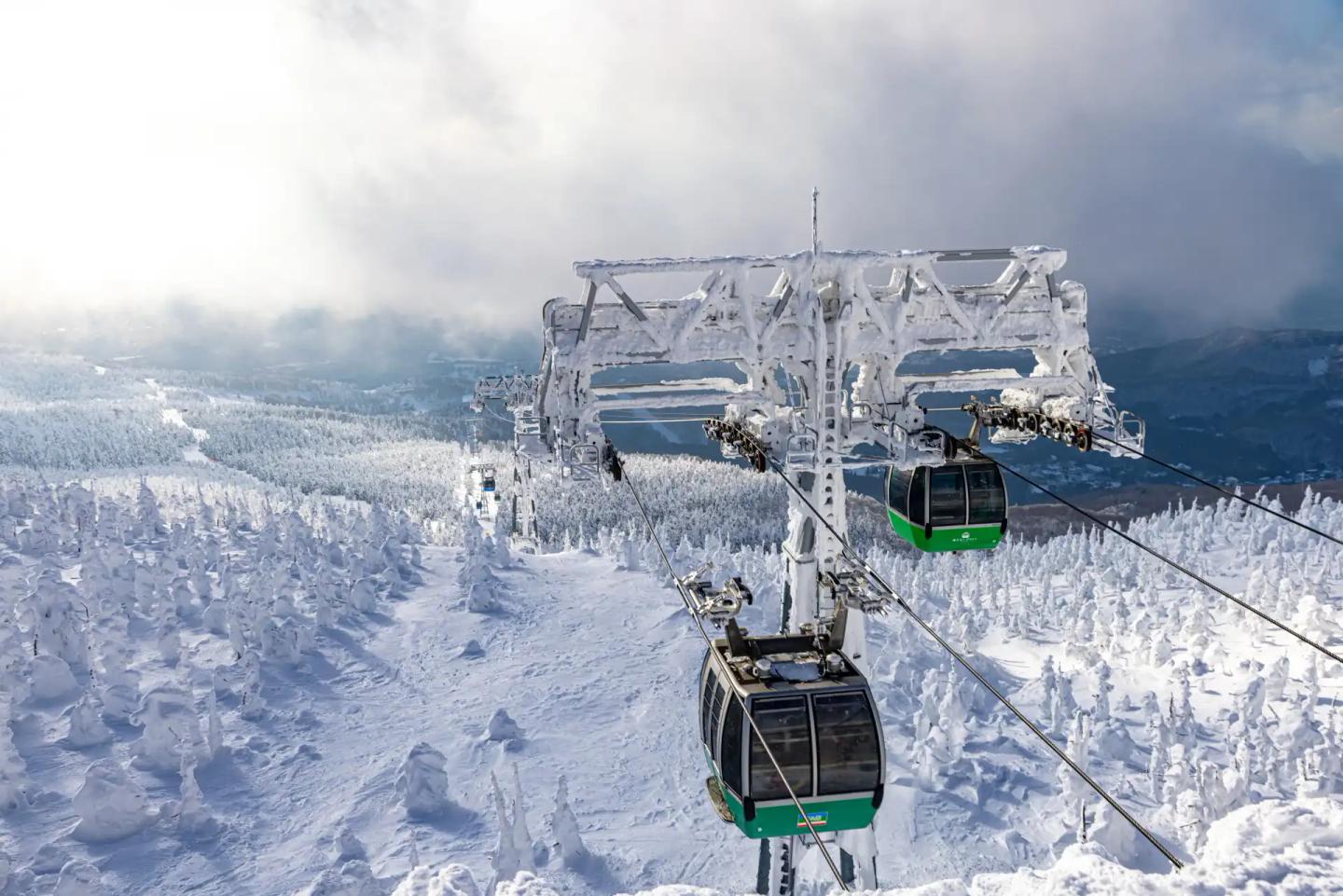
Japan is a country of four seasons. Each season brings its own beauty and charm. Winter in Tohoku transforms the region into a magical wonderland. Snow falls, lights glow in the darkness, and traditional festivals bring warmth to cold nights. From December to March, Tohoku offers unique experiences that you cannot find anywhere else in Japan.
This guide helps you discover the best winter festivals, activities, and events in Tohoku. You will learn how to reach each destination by Shinkansen and what makes each place special.
Overview of Winter Travel in Tohoku
Tohoku occupies northeastern Japan and includes six prefectures: Aomori, Akita, Iwate, Yamagata, Miyagi, and Fukushima. Snow falls from December through March, especially on the Sea of Japan side.
Six main Shinkansen stations connect Tokyo to Tohoku: Sendai, Yamagata, Akita, Shin-Aomori, Morioka, and Fukushima. From these hubs, local trains and buses reach festival sites, ski resorts, and hot spring towns. Traditional festivals, excellent powder snow, and warm hot springs make Tohoku a perfect winter destination.
Winter Festivals and Events in Tohoku
2025-2026 Winter Festivals and How to Get There
Here are the must-see winter festivals accessible by Shinkansen in 2025–2026:
Festival | Dates | Route | Station |
Sendai Pageant of Starlight | December 5–28, 2025 | Tohoku Shinkansen | Sendai (direct) |
Hirosaki Castle Snow Lantern Festival | February 6–11, 2026 | Tohoku Shinkansen | Shin-Aomori → Hirosaki |
Yokote Kamakura Festival | February 13–14, 2026 | Akita Shinkansen | Omagari → Yokote |
Aizu Painted Candle Festival | February 13–14, 2026 | Tohoku Shinkansen | Koriyama → Aizu-Wakamatsu |
Namahage Sedo Festival | February 13–15, 2026 | Akita Shinkansen | Akita → Oga |
Hachinohe Enburi | February 17–20, 2026 | Tohoku Shinkansen | Hachinohe → Hon-Hachinohe |
Why Travel by Shinkansen
The Shinkansen is the best way to reach Tohoku in winter. They connect Tokyo to major Tohoku cities in just a few hours. The trains are warm, comfortable, and reliable.
Winter roads can be dangerous with ice and snow. Driving requires special tires and experience. Buses may face delays or cancellations. The Shinkansen avoids these problems.
From the main Shinkansen stations, local trains and buses connect to festival sites and ski resorts. Many of these connections run more frequently during winter. JR East schedules additional seasonal services in winter.

Snow and Light Festivals
Yokote Kamakura Festival (Akita)
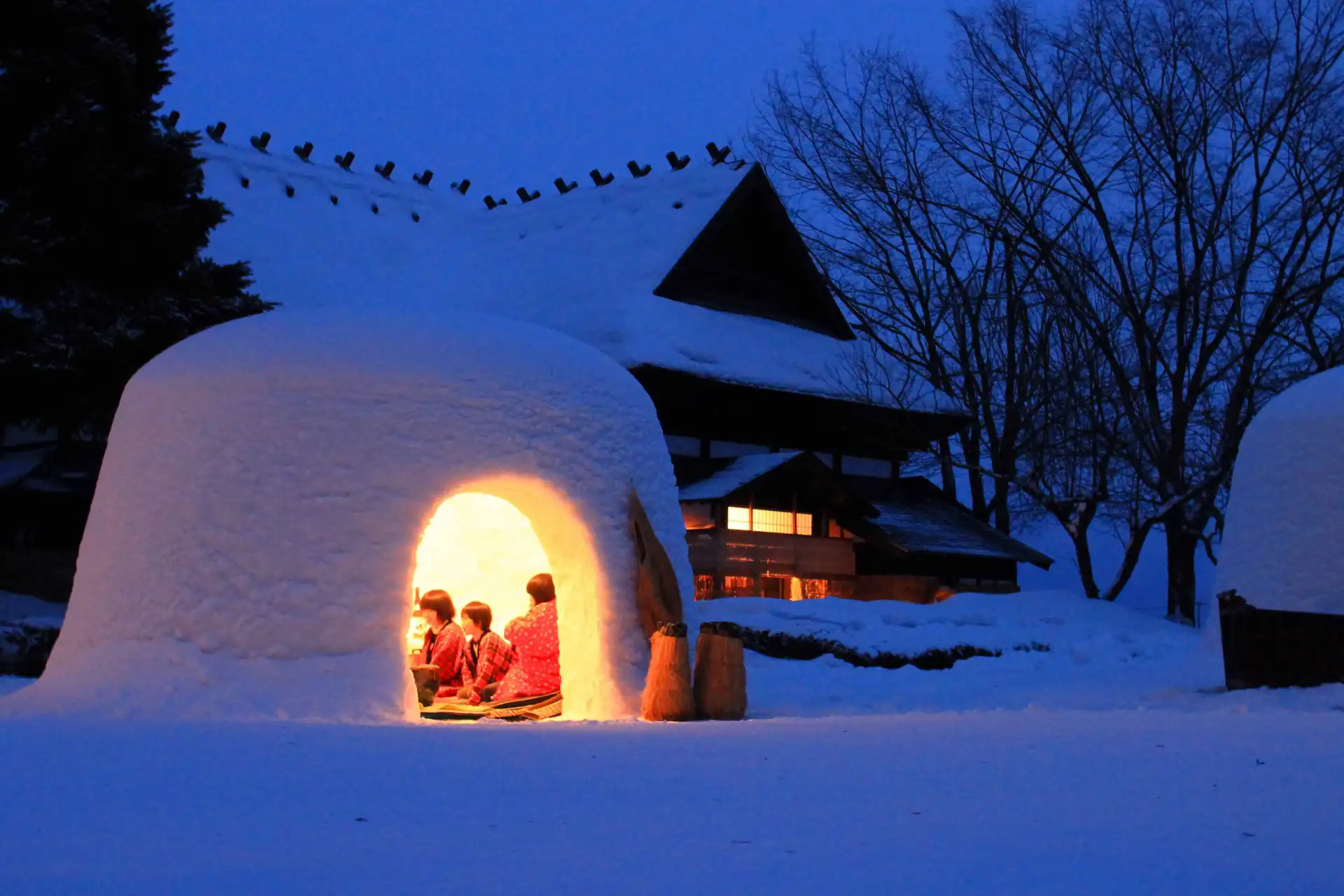
Yokote becomes a village of glowing snow huts each February. Local people build hundreds of kamakura, igloo-like houses with candles inside. Visitors enter the kamakura to drink amazake and meet friendly locals. This tradition celebrates water gods and prayers for good harvests.
Dates: February 13–14, 2026
Location: Yokote City, Akita Prefecture
Access: Akita Shinkansen via Omagari to Yokote (then about 10 min on foot to the festival area)
Aizu Painted Candle Festival (Fukushima)
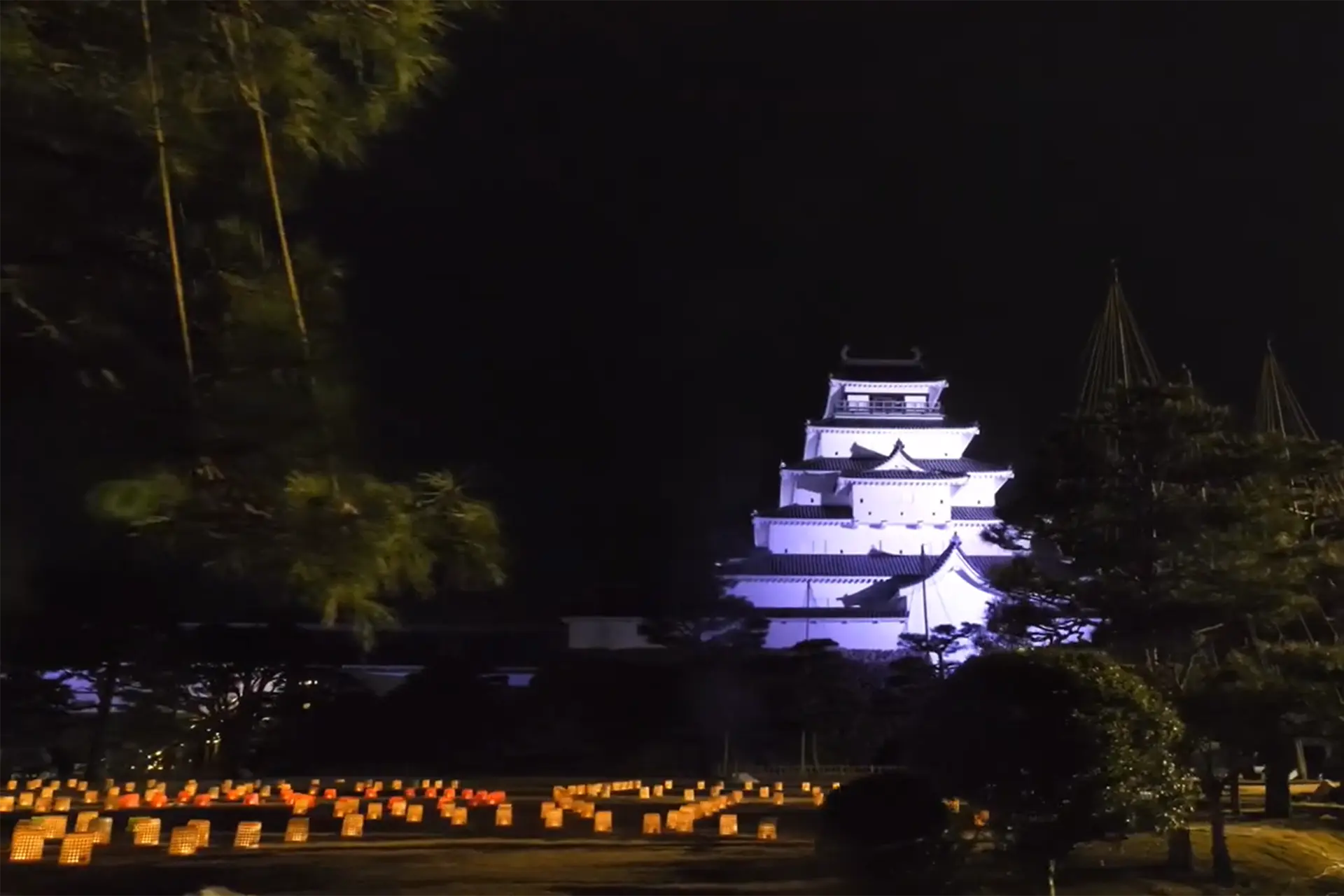
Aizu's hand-painted candles feature delicate flower patterns. Thousands of these candles light up Tsuruga-jo Castle during the festival. The red castle walls glow beautifully in candlelight. Each candle is unique and made using traditional methods.
Dates: February 13–14, 2026
Location: Aizu-Wakamatsu City, Fukushima Prefecture
Access: Tohoku Shinkansen via Koriyama to Aizu-Wakamatsu (then about 40 min on foot to the castle area)
Hirosaki Castle Snow Lantern Festival (Aomori)

Hirosaki Castle Park displays hundreds of snow lanterns and ice sculptures. Projection mapping creates colorful images on the snow structures. The historic park atmosphere with snow-covered cherry trees adds special beauty to the winter night.
Dates: February 6–11, 2026
Location: Hirosaki City, Aomori Prefecture
Access: Tohoku Shinkansen via Shin-Aomori to Hirosaki (then local train, about 45 min to the castle park)
Traditional and Cultural Winter Festivals
Namahage Sedo Festival (Akita)

The Namahage tradition is UNESCO-recognized intangible cultural heritage. During this festival, men wearing demon masks descend the snowy mountain with torches. Bonfires light up Shinzan Shrine as traditional dances and rituals unfold. This dramatic festival shows deep Japanese winter folklore.
Dates: February 13–15, 2026
Location: Oga City, Akita Prefecture
Access: Akita Shinkansen via Akita to Oga (then local bus, about 50 min to Shinzan Shrine)
Hachinohe Enburi (Aomori)
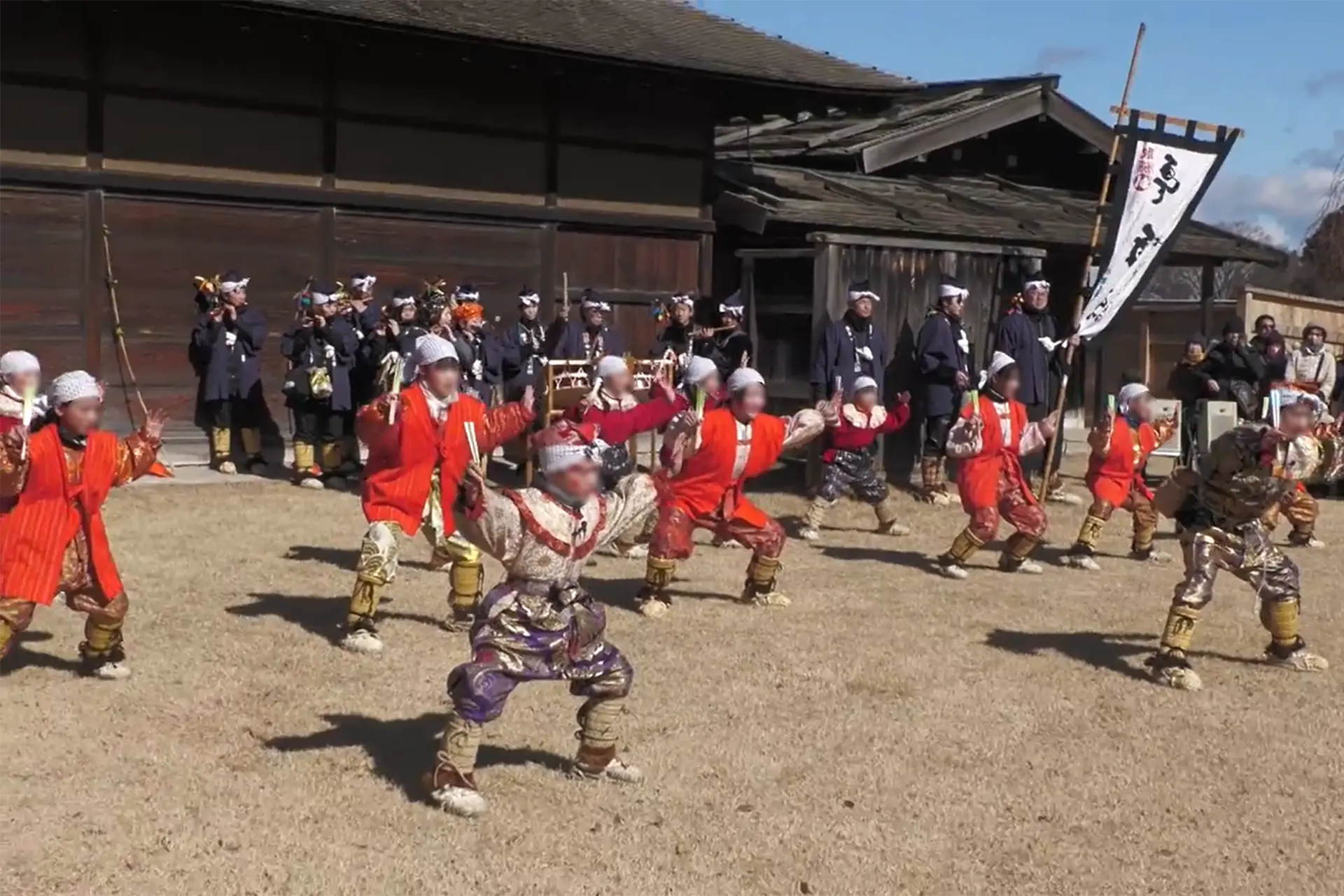
Enburi is a traditional harvest prayer dance over 800 years old. Performers wear horse-head decorations and dance to pray for good crops. Groups perform throughout Hachinohe city with music from flutes and drums. This winter tradition connects to spring hopes for farming.
Dates: February 17–20, 2026
Location: Hachinohe City, Aomori Prefecture
Access: Tohoku Shinkansen via Hachinohe to Hon-Hachinohe (then about 10–15 min on foot to the city center)
Winter Illuminations and Light Events in Eastern Japan
Sendai Pageant of Starlight (Miyagi)
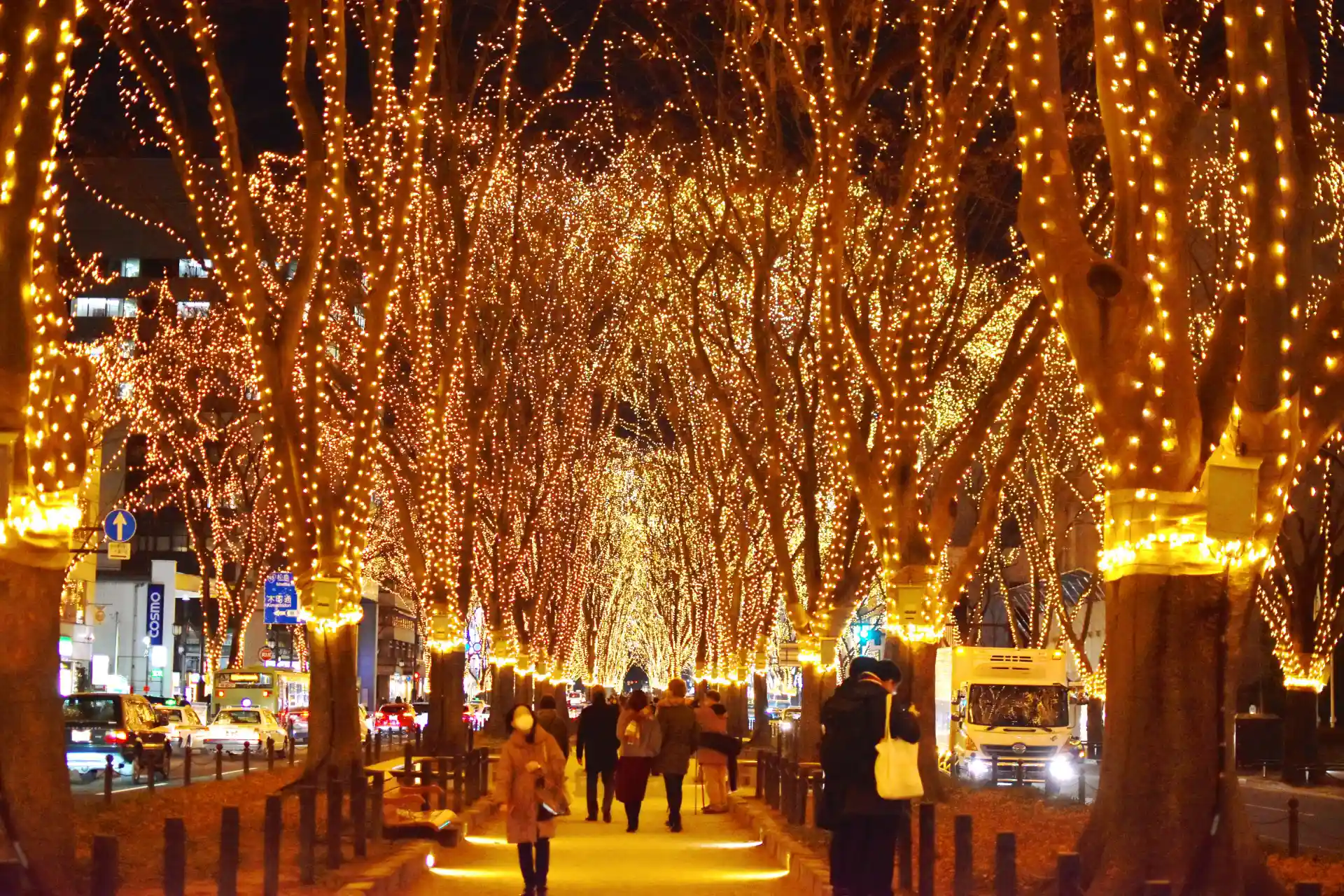
About 480,000 LED bulbs decorate zelkova trees along Jozenji-dori each December. The lights create a beautiful star tunnel above the street. This is one of Japan's most famous winter illuminations, running throughout December with special performances on certain nights.
Dates: December 5–28, 2025
Location: Sendai City, Miyagi Prefecture
Access: Tohoku Shinkansen to Sendai Station (then about 15 min on foot along Jozenji-dori to the illumination area)
Winter Activities and Experiences
Ski Resorts
Zao Onsen (Yamagata)

Zao is famous for its "snow monsters" or juhyo. These are trees completely covered in ice and snow. The ski resort offers courses for all skill levels and onsen facilities. A night ropeway lets you see illuminated snow monsters from above.
Location: Zao Onsen, Yamagata Prefecture
Access: Yamagata Shinkansen via Yamagata to Zao Onsen (then local bus, about 40 min to the ski resort and onsen area)
Appi Kogen (Iwate)

Appi Kogen is one of Tohoku's largest ski resorts. The resort has long courses and excellent powder snow. Modern facilities and English-speaking staff help international visitors. Night skiing is available on some slopes.
Location: Appi Kogen, Hachimantai City, Iwate Prefecture
Access: Tohoku Shinkansen to Morioka (then resort shuttle bus, about 40 min to Appi Kogen Resort)
Alts Bandai (Fukushima)

Alts Bandai offers stunning views of Lake Inawashiro and Mt. Bandai. The resort has long courses with variety for different skill levels. Many hot spring hotels are located nearby, making it easy to combine skiing with onsen relaxation after a day on the slopes.
Location: Bandai Town, Fukushima Prefecture
Access: Tohoku Shinkansen via Koriyama to Bandai-Machi (then shuttle bus, about 15 min to the ski area)
Relax in Snowy Onsen
Nyuto Onsen (Akita)

Nyuto Onsen features traditional hot spring inns deep in the mountains with milky-white water. Snow piles high around outdoor baths in winter. The area has seven different ryokan, many over 100 years old. Day-trip bathing is available at most inns.
Location: Semboku City, Akita Prefecture
Access: Akita Shinkansen via Morioka to Tazawako (then local bus, about 45 min to the onsen village)
Akiu Onsen (Miyagi)

Akiu Onsen is close to Sendai with a 1,500-year history. Several hotels offer day-trip bathing. The area has a beautiful waterfall that looks dramatic with ice and snow in winter.
Location: Sendai City, Miyagi Prefecture
Access: Tohoku Shinkansen to Sendai (then local bus, about 50 min to Akiu Onsen area)
Naruko Onsen (Miyagi)
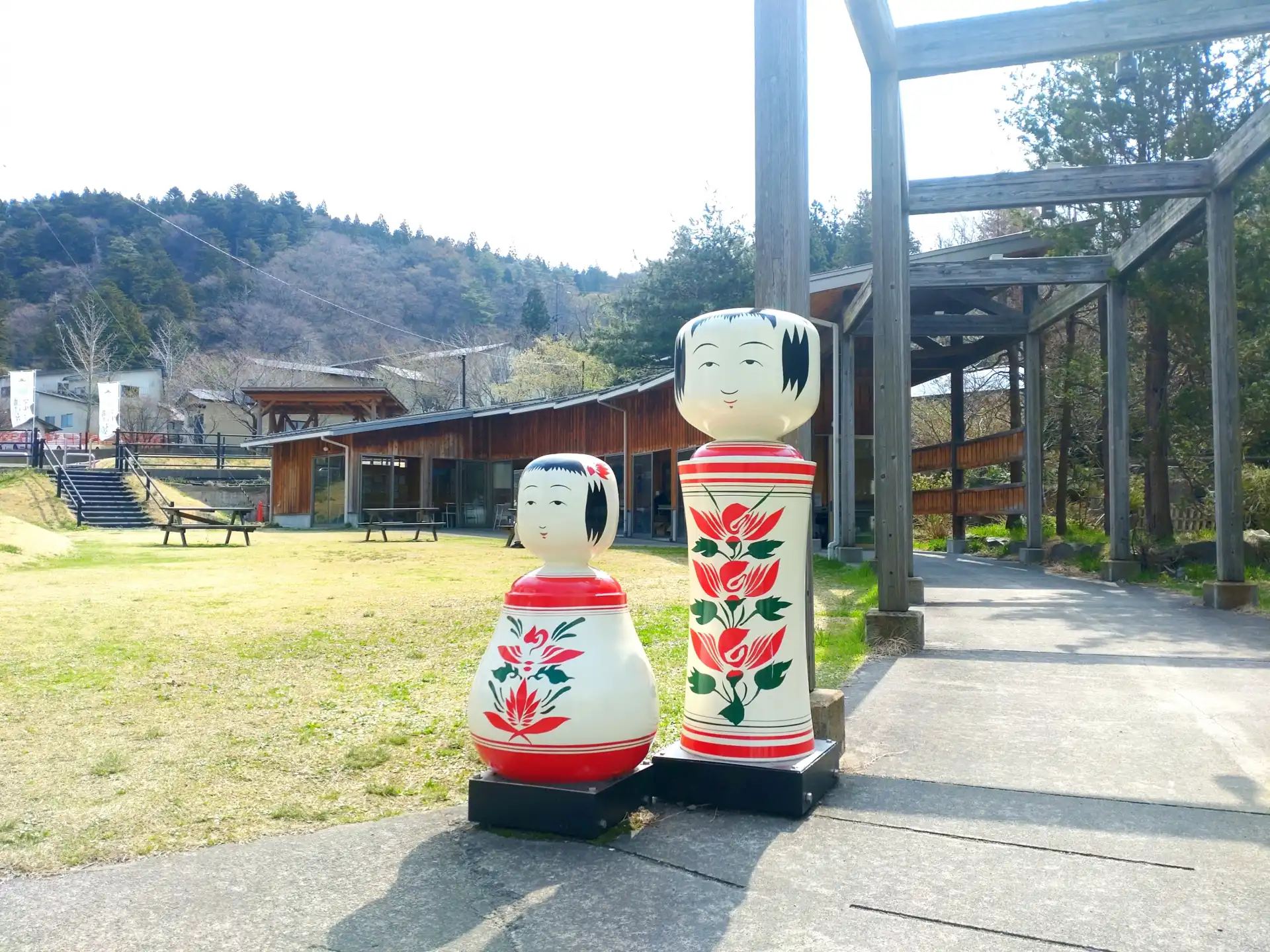
Naruko Onsen is known for kokeshi dolls, traditional wooden dolls made as a local craft. The hot spring water has healing properties. This location offers easy access from Sendai for a relaxing day trip or overnight stay.
Location: Osaki City, Miyagi Prefecture
Access: Tohoku Shinkansen via Sendai to Naruko-Onsen Station (in front of the station)
Practical Travel Tips for Winter Travelers
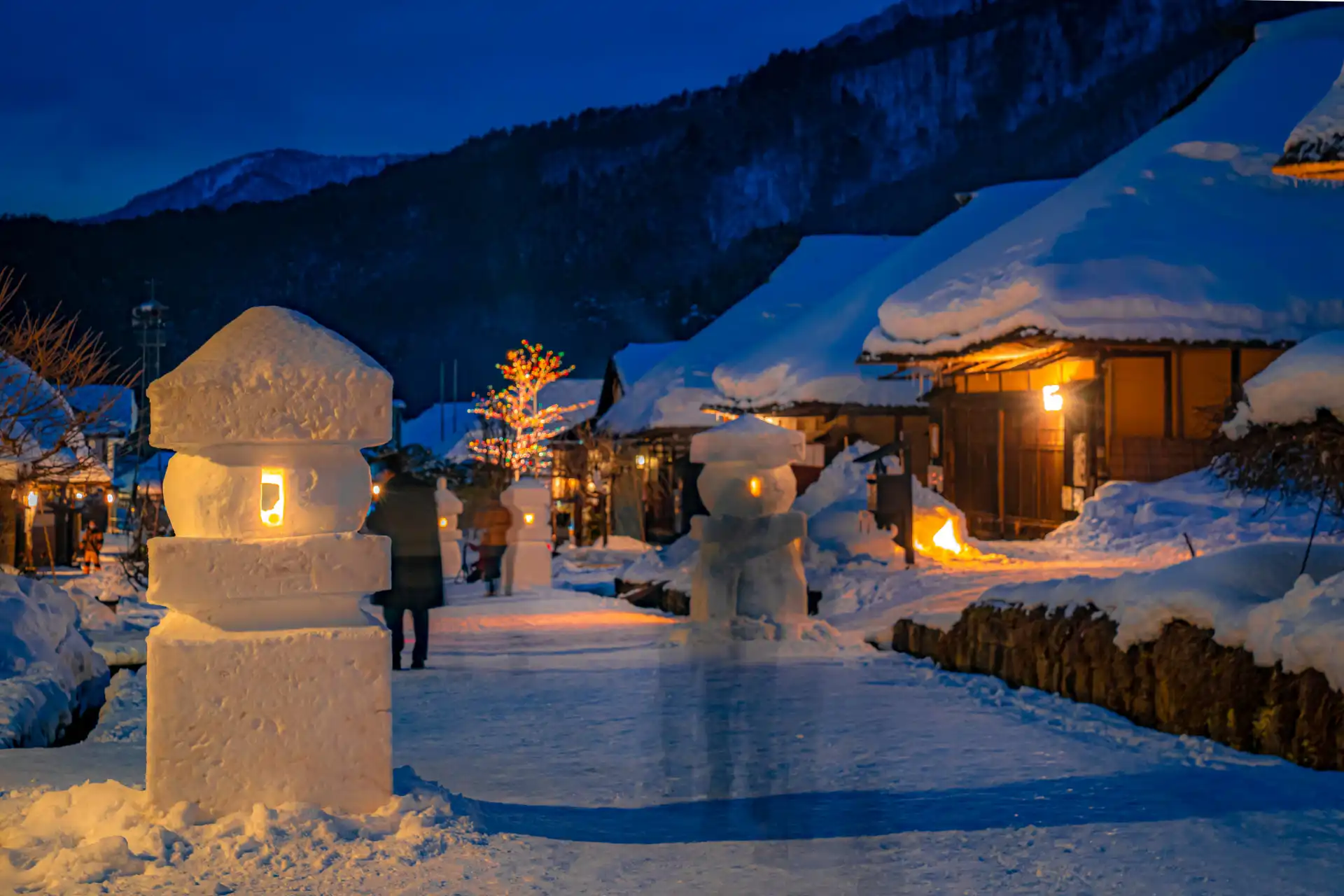
Best Time to Visit
Tohoku's winter season runs from December through March. Each month offers different experiences and atmospheres. Here is what to expect during each month of winter.
- December: Winter begins with illuminations. Sendai Pageant of Starlight starts in early December. Ski resorts open for the season. Snow is moderate, and crowds are smaller than peak season.
- January: Heavy snow arrives. Ski conditions become excellent. The snow monsters at Zao start forming. This is a good month for winter sports enthusiasts.
- February: Peak festival season. Most traditional festivals happen in mid-February. Snow remains deep. This is the best month for experiencing authentic winter culture. Book accommodations early for festival dates.
- March: Late winter still offers good skiing. Snow begins to soften. Fewer crowds make this a peaceful time to visit. Some festivals end by mid-March.
What to Expect
Tohoku's winter is much colder than Tokyo or Osaka. Understanding the temperature and snow conditions helps you prepare better for your trip.
How Cold Is It?
Temperatures frequently drop below freezing (0°C or 32°F). Nighttime temperatures in Yamagata and Aomori can reach -5°C to -10°C (23°F to 14°F), especially during evening festivals. Wind makes it feel colder on the Sea of Japan side. Indoor spaces are well-heated but dry, so bring lip balm and drink water regularly.
Snow Conditions Vary by Region
- Sea of Japan side (Akita, Yamagata): Heavy snow accumulates and stays on the ground. Waterproof boots with good grip are essential.
- Pacific Ocean side (Sendai, Fukushima): Less snow falls and melts quickly. Major cities are easy to navigate with regular winter shoes.
- Mountain areas (Zao, Hakkoda, ski resorts): Snow falls regularly with deep powder throughout winter. Bus schedules may change during heavy snow.
Does It Snow Every Day?
No, but snow that falls in mountain and western areas stays until spring. You will see beautiful white landscapes constantly, perfect for winter festivals and activities.
Essential Winter Travel Tips
- Footwear: Avoid shoes with smooth soles as sidewalks can be icy. Shoes with good grip are important.
- Clothing: Layer thermal underwear, sweater, and waterproof jacket. Bring gloves, hat, and scarf. Remove layers indoors as heating is very strong.
- Transportation: Shinkansen runs reliably in snow. Local buses may face delays. Check schedules daily and allow extra time. Download the JR East app for updates.
- Helpful Items: Buy hand warmers at convenience stores. Keep your phone in an inside pocket. Pack sunglasses for sunny snow days.
Travel Tohoku Easily with Japan Bullet Train
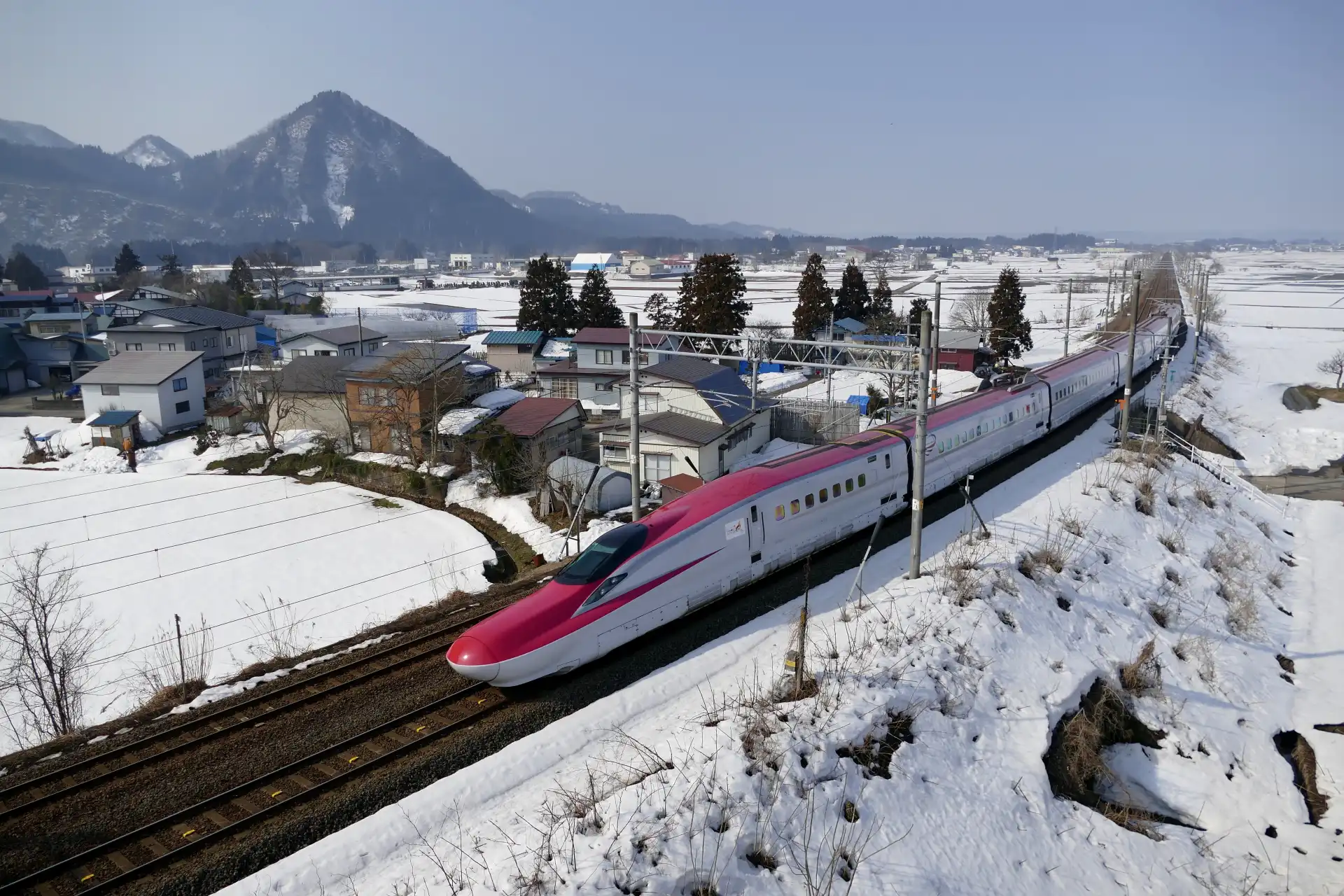
Why Choose Japan Bullet Train
Japan Bullet Train specializes in Shinkansen tickets for international visitors. The service makes booking simple and stress-free. You receive a QR code after booking. Exchange this code for paper tickets at major stations.
The service includes multilingual customer support. You can call or email with questions. Staff understand the needs of foreign travelers. They can help plan your route and choose the best trains.
Japan Bullet Train handles tickets for all Shinkansen lines. This includes the Tohoku, Akita, and Yamagata lines needed for Tohoku travel. The company is based in Japan and understands the rail system well.
How to Book Shinkansen Tickets
Visit the Japan Bullet Train website and select your route. Choose your departure date and time. The system shows available trains and times. Select the train that fits your schedule.
Complete your booking with payment. You will receive a confirmation email with a QR code. Use this QR code at any JR ticket machine to collect your paper ticket.
You can book tickets in advance, which is recommended during winter festival season. Advance booking ensures you get seats on popular travel dates. The process takes just a few minutes.
Take Me There
Winter in Tohoku offers experiences you will remember forever. Snow-covered landscapes, glowing festivals, and warm hot springs create perfect winter memories. The region combines natural beauty with rich cultural traditions.
The Shinkansen makes travel comfortable and reliable. You can reach festivals and ski resorts easily from Tokyo. Each destination offers something unique. From traditional kamakura huts to modern illuminations, Tohoku has it all.
Plan your winter journey to Tohoku today. Book your Shinkansen tickets through Japan Bullet Train. Experience the magic of winter in northeastern Japan. Let the snow, lights, and hot springs welcome you to Tohoku.

